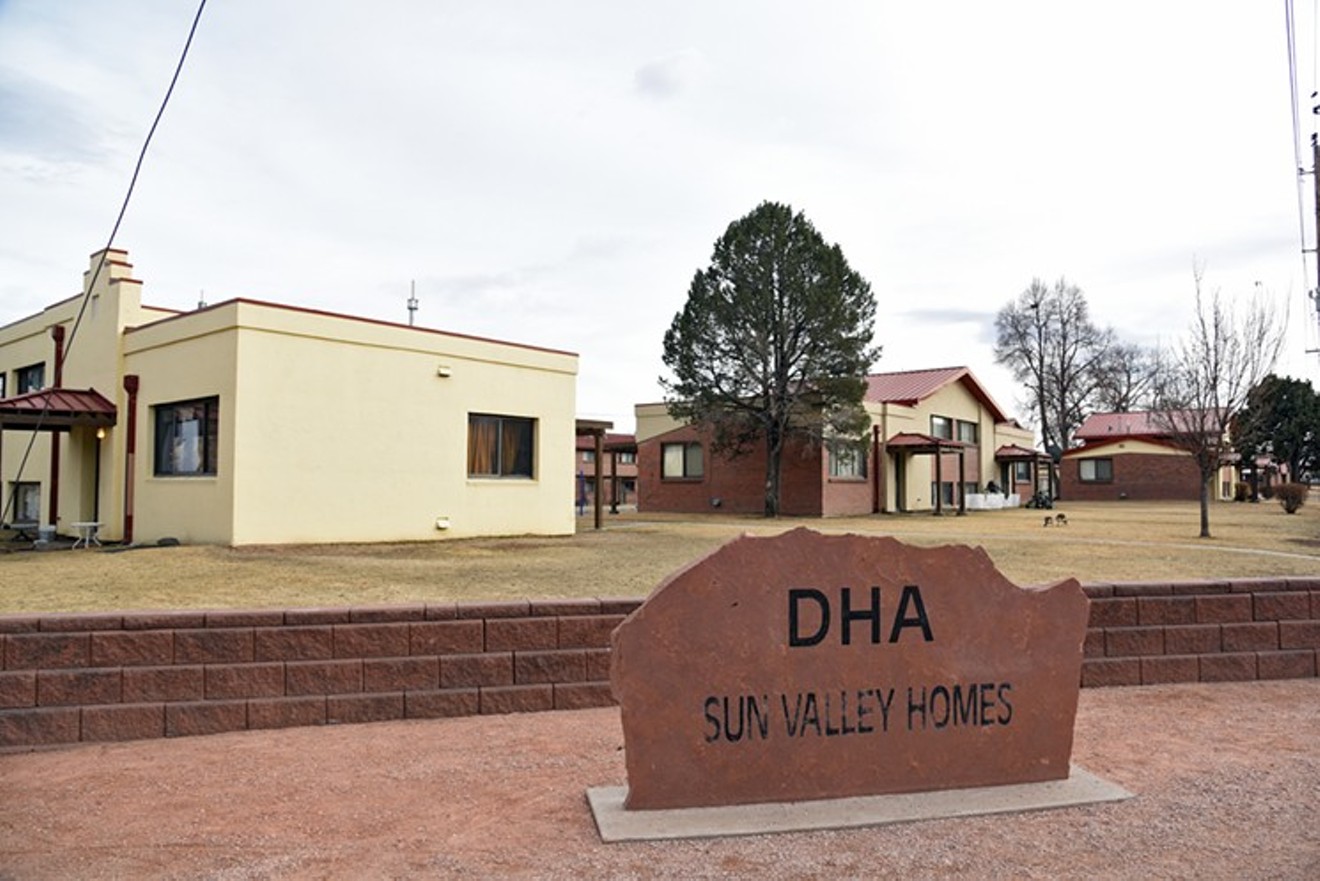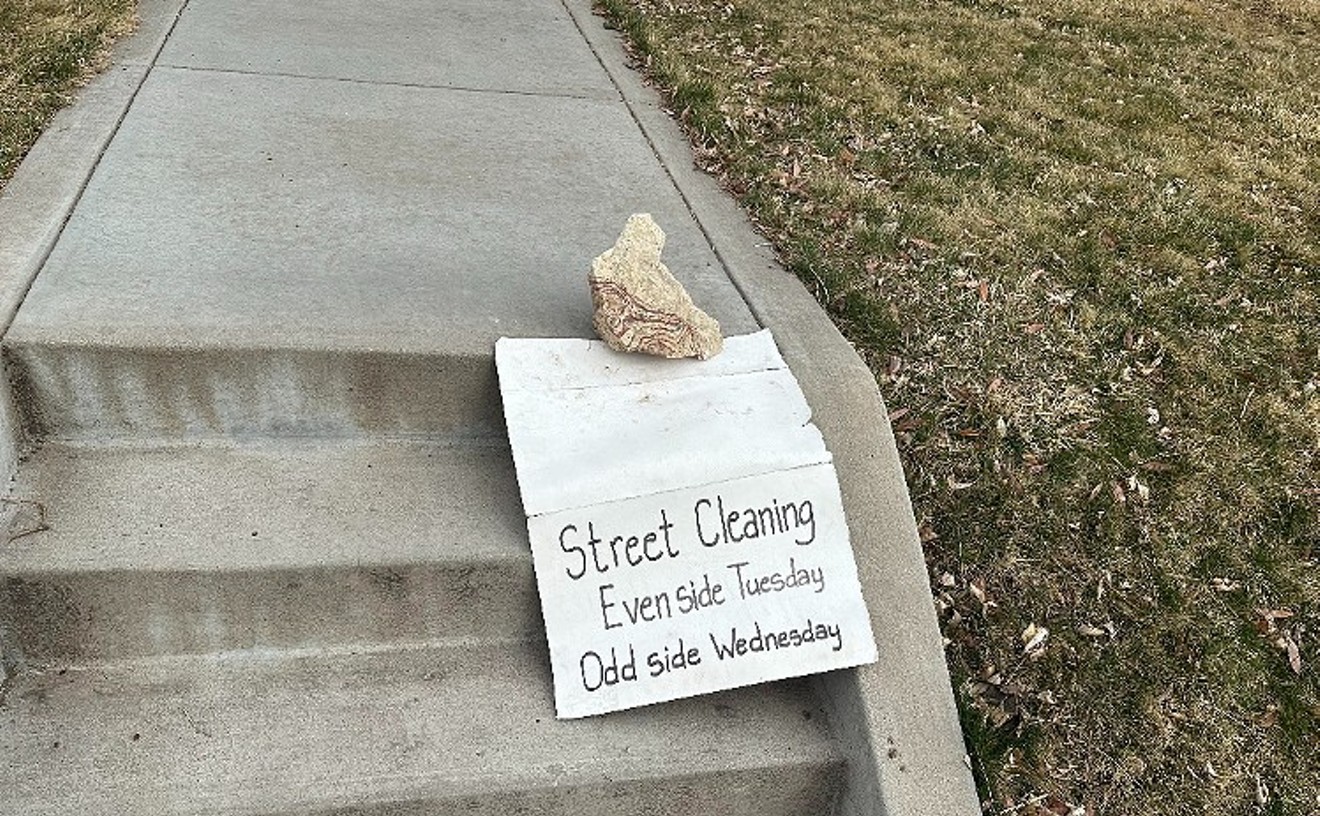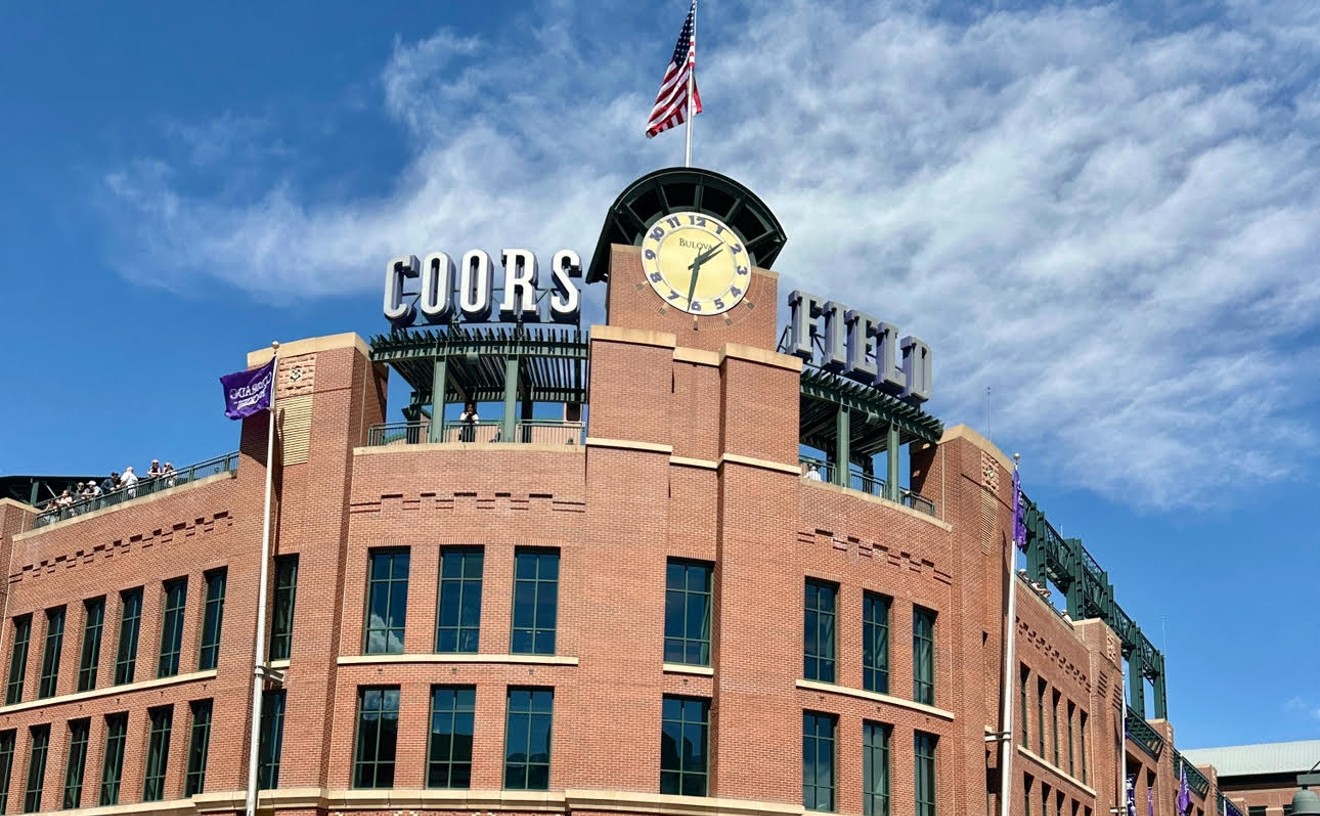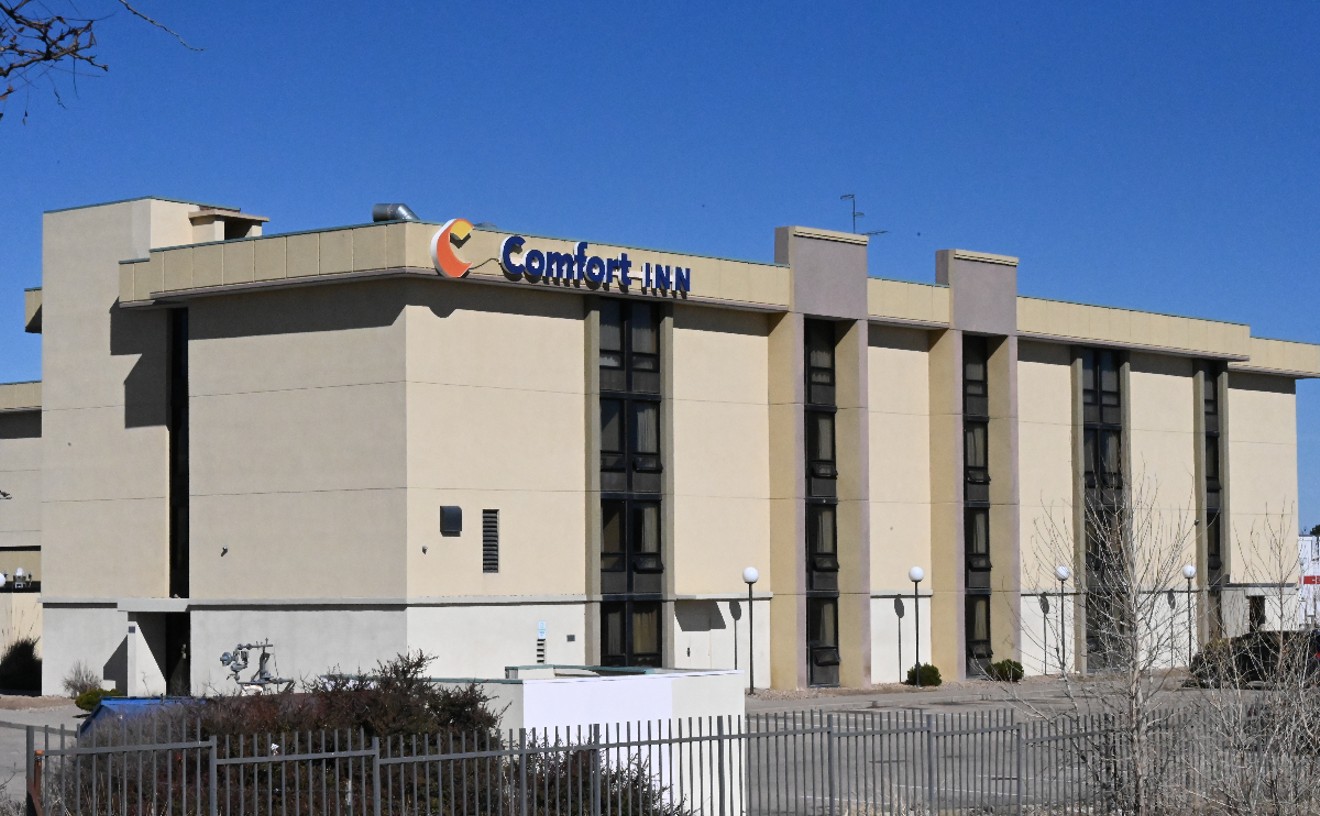Through a mix of authority-owned rental units and authority-managed housing vouchers for use in the private rental market, the DHA provides housing for more than 26,000 very low-, low- and middle-income individuals representing over 10,000 families, making it the largest landlord in Denver. The DHA, which is a quasi-municipal corporation governed by a nine-member board appointed by the Denver mayor and approved by Denver City Council, works with Denver’s Office of Economic Development as well as the federal Department of Housing and Urban Development to secure funding for its own projects. But it’s also selling land on which it could create more affordable rental housing.
Over the past several years, the DHA has unloaded a number of properties that have been bought by developers building high-end condominiums and townhomes. Land at 25th and Lawrence was purchased by Westfield Development in 2015 for its S*Park condominium project. NAVA Real Estate Development got a piece of Uptown for $7.1 million earlier this year, and this fall, the DHA sold 1.2 acres at West 11th Avenue and Mariposa Street to Koelbel Urban Homes for $2 million.
These are all prime parcels in central Denver, where the DHA could build affordable housing. So why is it selling the land rather than building there?

The Denver Housing Authority’s Ryan Tobin says that by selling off real estate holdings, the DHA creates more density in urban neighborhoods and increases affordability.
Anthony Camera
“Hope VI is the only way housing authorities can preserve or improve public housing and create mixed-income housing,” Tobin explains.
The Curtis Park Hope VI project plan was submitted in June 1998, the Park Avenue West plan in December 2002, and the South Lincoln Homes Revitalization/Mariposa District in November 2010: all years before the properties were sold.
In July 2016, the DHA submitted its Sun Valley Choice Neighborhood Initiative project plan to HUD. The Choice Neighborhoods Initiative is HUD’s successor to the Hope VI program; like Hope VI, it focuses on severely distressed public-housing properties, but it also expands Hope VI’s reach to include HUD-assisted private-housing properties and even entire neighborhoods.
Revitalization “plans are amended over time due to changes in economic or social conditions to allow for adaptation...to the ongoing opportunities that may arise,” Tobin says. By selling off pieces of its property to for-sale condo developers, the DHA is creating more density in urban neighborhoods, which helps to increase affordability in the long term, he explains. At the same time, the DHA uses the proceeds from land sales to help pay for the affordable-housing projects it builds in other locations.
“All of these land sales and revitalization plans have been submitted as part of a competitive application to HUD,” Tobin adds. “Mixing incomes and bringing in the private-sector investment is how we do stabilization in these neighborhoods.”

Developer Kyle Zeppelin says that selling prime parcels pushes longtime city dwellers to the fringes.
Anthony Camera
Other developers think the land sales are a smart move, though. According to David Zucker, president of Zocalo Community Development, the DHA is behaving responsibly by selling premium parcels so that it can develop more affordable units in other parts of Denver than it could in the city’s high-priced central core. “It may look questionable, but it’s entirely logical,” Zucker says. “It’s a smart practice to sell high-valued, high-development capacity land and use those dollars...for additional development. In some ways, it’s like development arbitrage — selling high value and putting it into lower value. It’s strategic. The impact is greater because they’re taking those dollars to Sun Valley or Knox Court, where they can build twice the number of units they could have if they built on Washington or Lawrence.”
Over the past twenty years, the DHA has redeveloped a number of its older housing complexes with the help of funding from Hope VI. One of the earliest Hope VI-funded redevelopments was in Curtis Park, where the authority removed 200 public-housing units and replaced them with 300 units of mixed-income housing. At the same time, some DHA property in the area was sold to private developers, including a patch of land known as Sustainability Park at 25th and Lawrence streets; that went to Westfield Partners with the stipulation that the developer turn it into for-sale housing. The first phase of the S*Park project, 91 condos, opened earlier this year; Westfield is now developing eight townhomes on the site. The project also includes a 7,200-square-foot greenhouse with 340 aeroponic towers that grow leafy greens. The greenhouse is operated by Altius Farms, which offers residents a vegetable subscription program, greenhouse tours and classes, and community dinners with Denver celebrity chefs.

Westfield Partners’ S*Park project holds Uchi, a sushi restaurant out of Austin, as well as a greenhouse.
Anthony Camera
Westfield partner Jonathan Alpert says that S*Park is an important project because without attainable for-sale housing, Denver is in danger of becoming a city with a transient population that is not invested in the community.
“I love DHA,” Alpert adds. “They have been an incredible partner in this project and were instrumental in making the greenhouse a reality.”
The DHA used proceeds from the sale of the S*Park property to help fund Phase VII of the DHA’s Mariposa project at 1040 Osage Street, which includes 45 units in a 50,000-square-foot building with 29 parking spaces and 1,700 square feet of commercial space fronting Osage. That building is part of a $197 million redevelopment of the fifteen-acre site that held the obsolete, circa 1953 South Lincoln Homes. When the DHA decided to rehab the whole area into the Mariposa District, the authority quizzed residents and neighbors. Some said they felt unsafe, yet still had a deep connection to the community located near downtown.
Over the past decade, the DHA has tripled the number of units in what’s now a mixed-income neighborhood surrounded by parks and a new pool. The DHA recently sold its headquarters in Capitol Hill for $9 million; it will relocate to the Mariposa District, too.
But Zeppelin is critical even of projects that are seemingly successful, including the Mariposa District. The problem, he says, is that most of the DHA apartments are studio and one-bedrooms, too small for most families.
And they took too long to build. “While they take five to seven years to build these units, people are already long gone from the city,” Zeppelin explains. “They’ve already been priced out.”
More recently, the DHA announced redevelopment plans for the Platte Valley Homes in the 3000 block between Stout and Champa streets. The nine buildings on the block, dating back to 1942, had 66 residential units. Their tenants were moved to other DHA properties earlier this year. The authority will now redevelop the complex, renovating six of the existing structures. Three more will be demolished and the land beneath them sold, likely to developers of for-sale homes. The funding from the land sales will repay the DHA line of credit needed to fund the redevelopment of Platte Valley Homes.
The DHA is also looking at the revitalization of Sun Valley, one of Denver’s poorest neighborhoods. The DHA acquired most of the area in the 1940s, and it’s now poised for a renaissance: in the shadow of Mile High Stadium, close to downtown, with easy access to light rail. The area has already drawn the interest of developers: An old warehouse building was developed into an office complex known as Steam on the Platte, and Meow Wolf plans to open a massive immersive-art exhibit in 2020 in a new building that will be sandwiched between viaducts.
Last year, the DHA received a $30 million Choice Neighborhood Initiative Grant to help create a comprehensive community revitalization plan for Sun Valley. The goal is to add up to 800 new housing units in a mixed-use, mixed-income neighborhood. “We’re building more density to accommodate the growth of our city and create more affordable long-term options,” Tobin says.
Over the course of six phases of development, the $240 million DHA project will replace both Sun Valley Homes and Sun Valley Annex’s 333 public-housing units, while constructing 202 moderate-income housing units and 215 market-rate units. There will be a mix of lower-density townhomes near the neighborhood’s elementary school and higher-density developments near the light-rail station. The plan also calls for a family/youth hub, open-space amenities and opportunities for local businesses. Infrastructure improvements, to be funded through a GO Bond, include the realignment of West 13th Avenue to improve mobility from Federal Boulevard to downtown. GO Bond funding also will put the initial investment into a new park along the South Platte River that runs alongside Sun Valley.“They’re a critical partner for us in developing and preserving affordable housing."
tweet this
The City of Denver, which has been criticized for not doing enough to encourage affordable housing, praises the DHA’s efforts.
“They’re a critical partner for us in developing and preserving affordable housing,” says Laura Brudzynski, manager of housing policy and programs for the Office of Economic Development. “Of our total rental units across the city, DHA’s properties represent about one-quarter. There are 20,000 affordable units in the city, and 5,000 of them are operated by DHA.”
Though the DHA has a strong partnership with, and is supported by, the OED, it is not a city agency and does not receive special treatment when seeking funds for its developments. “We evaluate applications for gap finance by the housing authority just like we would any other partner,” Brudzynski explains.
The DHA isn’t the sole entity with the mission of creating and preserving affordable housing. Over the years, a variety of tools have been used to ease the city’s mounting affordable-housing crisis.
In 2016, Denver City Council approved the city’s first dedicated fund for affordable housing. Combining property-tax revenue with a one-time fee on new commercial and residential development, the fund is projected to collect at least $150 million over a decade. In 2017, the first year city funds dedicated to affordable housing became available, the OED invested $26.2 million in 1,502 new income-qualified housing units and 259 preservation units, leveraging $429.5 million in additional private and public resources. The OED also invested nearly $5 million in programs to assist 10,391 renters, homeowners, homebuyers and people experiencing homelessness by working with community partners to provide services ranging from tenant-landlord counseling to help with down payments.
In 2016, Mayor Michael Hancock issued an executive order stating that affordable housing is a priority and that any land the city sells should be considered for that purpose.“We’re vetting parcels as they’re being evaluated for disposition,” Brudzynski says.
But there’s been criticism of these sales, too. Among the parcels evaluated for affordable housing under the executive order was a plot at 1701 Platte Street that the city had owned since the 1950s. The city received eight proposals to develop the site, including one from Zocalo to build 200 residential units, with 20 percent (forty units) set aside for twenty years for people earning less than 60 percent of the area median income; about 160 units would have been for renters earning 80 percent of the area median income. Instead, the city selected a proposal from the Nichols Partnership, which agreed to pay $13.5 million for the parking lot. The company’s $20 million plan calls for retail and restaurant space on the ground floor of a 246,000-square-foot building, with the upper floors devoted to offices.
At the time, the city said it selected the Nichols bid because of the price the company offered and its commitment to include public parking. City officials also explained that the executive order merely requires the city to evaluate the property for development of affordable housing, not follow through on awarding it to a developer who will.
Earlier this year, Denver City Council approved a five-year affordable-housing plan — called “Housing an Inclusive Denver” — that expands on existing approaches and outlines new strategies for spending the $150 million projected for the local housing fund. Council also approved raising taxes on recreational marijuana sales, earmarking the money for the city’s general fund and predicting that it will increase the city’s commitment for affordable housing from $15 million to about $30 million a year.
The DHA is getting about half of the money generated from the marijuana tax, which will allow it to take on $105 million of new debt to speed up redevelopment projects and land purchases. The result will be the creation or preservation of about 6,200 additional affordable homes over the next decade, the DHA says.
“Hancock has the intention to bring all of these agencies and sister agencies together,” says Zucker, who got $2.5 million in tax breaks for his project at the old First Avenue Hotel, which includes a hundred affordable micro-units. “It should have happened ten years ago. The mayor has come a long way on the topic of affordable housing, which was not on his radar screen when he was a candidate.”
And the DHA could lead the way. “The DHA is one of the most active developers in Denver because of Hope VI,” Zucker continues. “They’re not just one of the best developers in Denver, they’re one of the best multi-family developers in the country. They do things with great forethought.”














